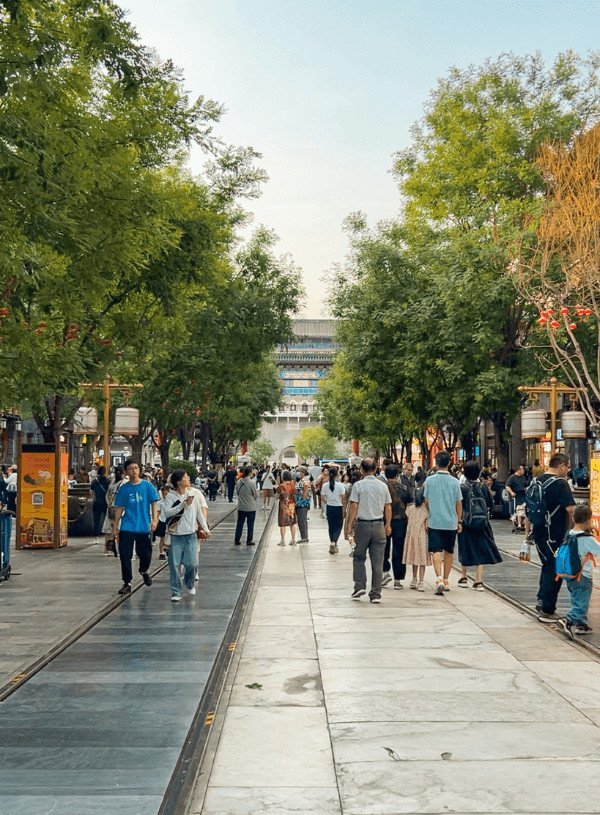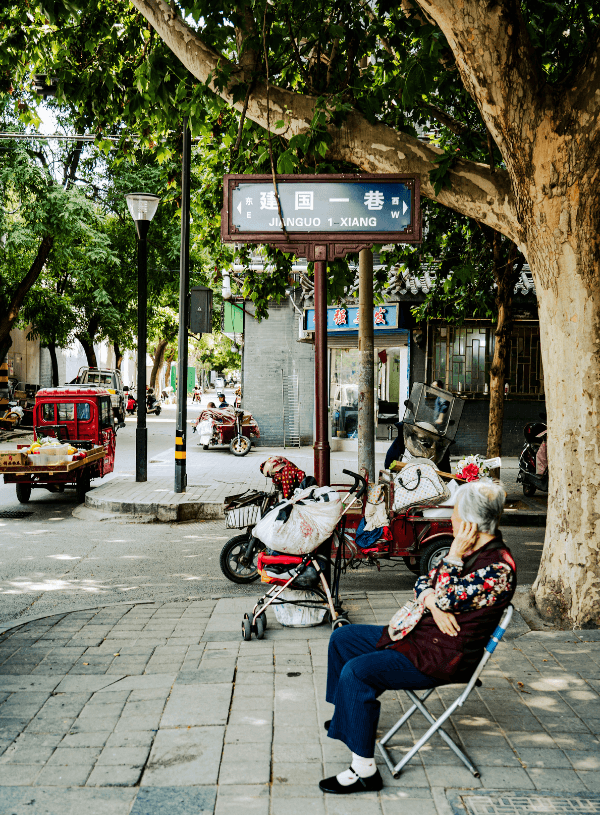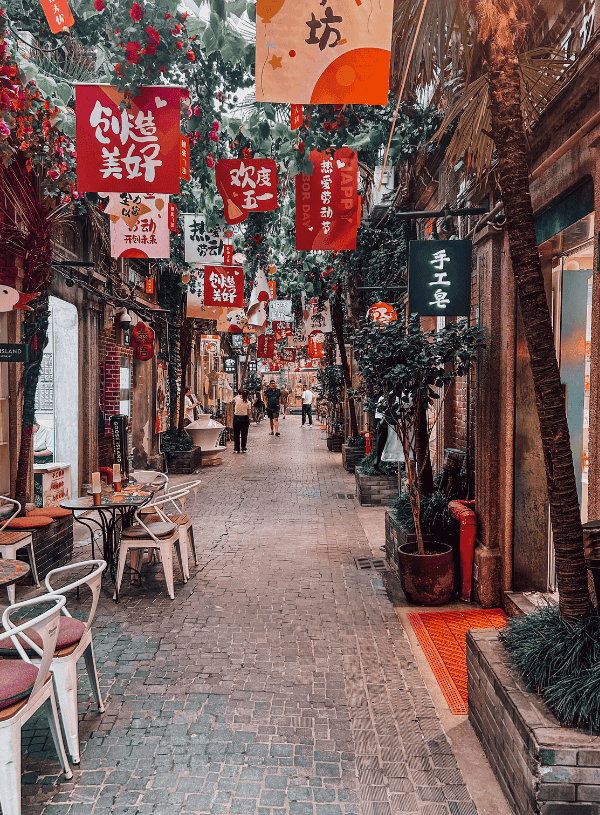In recent months, more than a couple of people I know are (finally) traveling to China. I’ve noticed that one of the main questions remaining relates to what travel apps are absolutely 100% essential, which ones aren’t, and what’s the best way to stay connected.
So, as a former resident of Xi’an and an experienced China traveler, I thought… why not share my wisdom on the China travel apps that are truly essential for your first trip? You don’t want to download 50 apps that you’ll never use, do you?
This article may contain affiliate links. This means that if you purchase through one of the links, I may be paid a small commission at no extra cost to you. Thank you for supporting the blog, allowing me to share meaningful travel experiences with you.
Don’t have time now?📌 Save it for later!

Staying Connected While Traveling in China
VPN
When I lived in China back in 2019, e-SIMs didn’t exist, and to be completely honest with you, it would have been much more expensive to pay a monthly fee for an e-SIM for such a long time (I was there for a year and a half).
So, this is how I managed it: on the first day of my stay, after spending a fortune to send the typical message to my mom, “I landeeed,” without any kind of Chinese plan or roaming package, I purchased a local SIM. However, local SIMs usually take at least 24 hours to activate, and in fact, on that first day, my roommate and I got lost around the university campus because we didn’t have connection.
Unfortunately, this is still the procedure if you are unable to activate an e-SIM on your phone, which is likely if your device is not recent. But don’t panic; you’ll find Wi-Fi at the airport to send that famous “I landed” message. Just keep in mind a couple of suggestions if you need to take a taxi right after landing:
- Purchase your SIM at the airport, as staff there are more likely to speak English and answer classic tourist questions like “When will I have internet?“
- Make sure to have your hotel address written in Chinese somewhere, as you will likely be unable to look it up online.
- Make sure to have cash to pay for the taxi (but don’t always expect change, as in China, cash is not king)
- Download a VPN while you’re still at home, because you’ll have a hard time doing it in China.
When I lived in China, I had a yearly subscription with ExpressVPN, and in general, it was a good choice for me. I don’t recall having any problems during my time there. My roommate had the NordVPN and was very happy with it. So, if you’re looking for a VPN, these are two solid options you can check out.
eSIM
The last time I traveled to China, in summer 2024, I was finally able to purchase an eSIM, and if you can too, don’t even bother purchasing a local one. The eSIM I used was Holafly, an unlimited data plan, and it worked perfectly without downloading a VPN. The only problem I encountered was that TikTok didn’t work for some reason, but that wasn’t a major issue.
I installed the eSIM before departure, following the small guide I was sent by email after purchase and activated it once I landed; it immediately found the local provider without any problem. If you’re looking for another provider, I purchased an Airalo eSIM during my latest holiday in the Emirates, and it works as well as Holafly, so both are valid options.
Essential China Travel Apps
1. Alipay
I always hear so many people talking about WeChat, but the truth is that if you don’t plan on communicating with locals, you will not need it (plus it will be a nightmare getting it verified once you land in China, but that’s another story). Alipay does exactly the same things (except serving as a message application). So, below is why Alipay is absolutely essential.
Digital Payments
In China cash is not king, digital payment is. You’ll realize the first time you’ll try paying by cash and you will not get change in return. This is why Alipay is essential.
You can link your debit or credit card to your Alipay account and use it for all your digital payments. In the main tab (image on the left), you’ll see a scan and a pay/receive button. These are the functions you’ll use the most. Whenever you see a blue QR code at the cashier, it means you have to scan and pay in this way. The pay/receive button is when the merchant will scan “you“.

To link your credit card, head to your account on the bottom tab and click on bank cards (image on the right). The app will require you to add a code to secure your first payments. Please remember that code, because it’s the one you’ll be asked to type the first time you use the app in China.
Taxi Rides
Another function that may be useful is DiDi (first icon below the blue tab). DiDi is the Chinese version of Uber, and instead of downloading it separately, you can directly use it and pay with Alipay. The interface is in English, so you will not have any problem using it.
Hotels, Flights & Train Tickets
Trip.com is a widely used website in China (if not the most used) for train and flight tickets and hotel bookings. If you ever need to book something on the go while in China, you don’t need separate applications but can use them directly opening Alipay.
Useful Vocabolary for Digital Payments
2. Reliable Map Application
This topic is a bit tricky. So, if you have an iPhone, you don’t have to worry. With an eSIM, the built-in Apple Maps works perfectly, and it’s actually your best bet for both street and subway directions.
You can simply add your location, type in where you want to go, and you’ll have spot-on directions. If you need to reach a place by subway, the map will show you the fare you’ll need for the ticket, your get-off stop, of course, but also the right exit from the subway (Exit A, B, etc.) to nail your destination.
What If I don’t have an Iphone?
Here’s where things get tricky because the app everyone usually recommends, Baidu Maps, is completely in Chinese. You can still manage by copy-pasting addresses in Chinese. But if you don’t want the extra headache, using Organic Maps (for street directions) along with Metroman (which we’ll talk about next) is a great alternative. Pro tip: I’ve personally seen that Google Maps is super unreliable in China, so you’ll want to avoid it.
3. MetroMan
If you don’t own an iPhone, you’ll definitely need to download a reliable subway app, and MetroMan is it. With an English (and not only) interface, it’s the best app to make sure you don’t get lost in the Chinese subway.

Here’s how it works: MetroMan uses subway stations, not locations, so you’ll need to type in the name of the closest subway station to where you are and where you want to go (first image on the left). The app then shows you different trip options, with the quickest way at the top (middle image), and tells you the fare you’ll need to pay at the ticket machine. You can then dig into your selected journey to see exactly how many stops you’ll be riding (right image).
Pay Attention to What You Write
This is super important! Chinese subway station names, especially to a non-Chinese speaker, can sound totally identical. Think you can’t tell the difference between a station ending in Zhai and one ending in Zhao? Think again. Be super careful when selecting your subway station, or you might end up on the complete opposite side of the city!
4. Google Translate
As you all know, the language barrier is truly a thing in China. But here’s the cool part: everyone, even Chinese citizens, uses their version of Google Translate. And you can do it too to communicate with restaurant staff, hotel hosts, taxi drivers, and pretty much anyone you might meet.
I’ve seen tons of people using the vocal function, where you record what you want to say, and the app translates it in real time. The person you’re talking to can do the same thing on their end. You can also use it to take pictures (of restaurant menus, for example) and translate them. Don’t sweat it about Google being blocked – with an eSIM or VPN, it’ll work just fine.
5. Pleco
Pleco was probably the first application I downloaded when I arrived in China. It’s an English-Chinese vocabulary app where you can look up simple, everyday words you need translated.

Picture this: you’re in a shop looking for a toothbrush but can’t find it. Just type the word on Pleco and show the Chinese translation to the merchant. Same goes for food – want to make sure you’re ordering eggs or chicken meat? Look it up and show the restaurant staff. That’s the beauty of Pleco – it’s so simple!
6. WeChat
Here’s when it gets controversial: everyone says WeChat is essential if you’re traveling to China, but to be honest, I don’t think it is if you’re staying for just a couple of weeks and don’t need to communicate with locals like guides or taxi drivers. If, on the contrary, that’s your situation, then yes, you’ll need it. But here’s the thing: even if you download it at home and it works fine, you’ll need to get through a verification once you’re in China.
Usually, this process involves being verified by another old WeChat user who uses WeChat Pay. When I used to live in China, a fellow expat helped me set it up. But this time, I met a Chinese girl who probably didn’t have WeChat Pay, and we tried to verify my account, but no luck.
So, if you really need it, your best bet is to ask a hotel staff member for help. But if you’re on a tour or don’t plan on chatting with locals via WeChat, just skip it. Honestly, I didn’t need it during my last visit.
7. XE Currency Converter
There’s nothing worse than thinking, and I quote myself, “everything is sooooo cheap in China” and then coming back home after two weeks having spent around $100 on Chinese tea (and yes, this is a true story). Traveling to China on a budget is 100% possible, especially if you have the XE Currency Converter app. The truth is, in cities like Shanghai and Beijing, things aren’t always “sooo cheap” as we might think. I constantly have to remind myself of this. So, checking what you’re actually paying in real time is definitely a wise move.
And there it is! These 7 China travel apps are all you’ll truly need for your upcoming trip to China. No nonsense downloads, just the essentials! Traveling to China is an adventure, and I hope this blog post provided you with the tools to tackle this trip with confidence and the digital know-how you need. So, where are you traveling to then? I miss China so much and can’t wait to hear about your plans – drop a comment and let me know! And don’t forget to check out my China Travel Guide, maybe you’ll find that missing piece of information you’re looking for!
Did you find it helpful? 📌 Save it on Pinterest!







